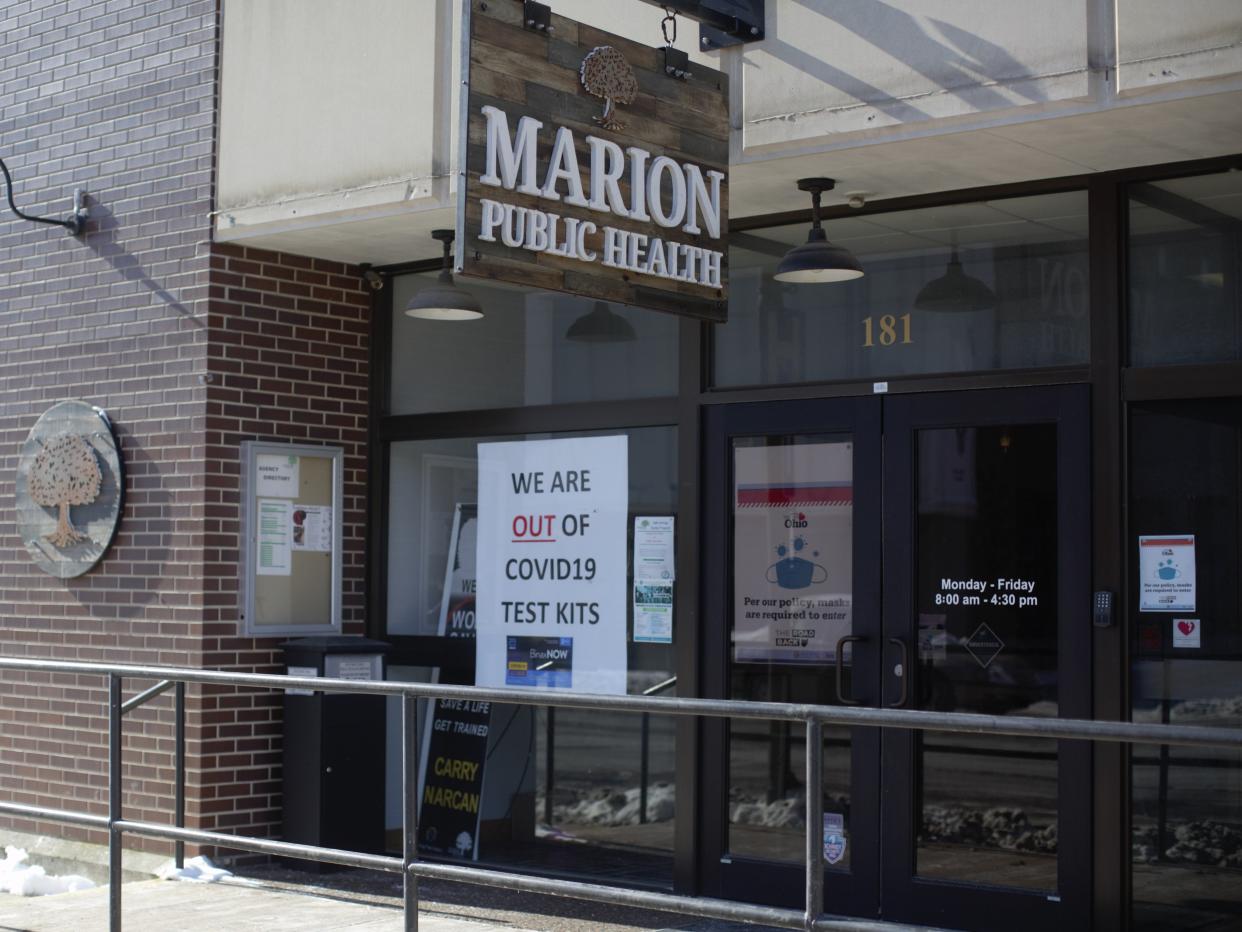Is a COVID peak on the horizon for Marion? Numbers steady but still high, experts say

As the omicron variant has spread throughout Marion County, taking a toll on schools, businesses and hospital workers, case numbers have leveled out to a steady, but still high, spread across the community.
With 2,202 cases throughout the two weeks leading up to Jan. 21, Marion Public Health is working to analyze its data on case numbers to determine if the county is approaching a peak. There have been difficulties due to delays in numbers updating from the Ohio Department of Health's system, meaning the numbers shown internally are not always entirely up-to-date.
Marion County has been averaging over 200 cases per day, according to Marion Public Health Commissioner Traci Kinsler, but as of Thursday, Marion Public Health saw a drop to 99 new cases documented.
The public health team is working to identify whether this number is evidence of a legitimate drop in case count or if it is simply a result of a processing delay, with all numbers not yet showing in the system.
"It's hard to say whether that's an actual dip today or just not everything was loaded into the system yet," Kinsler said.
If this drop in case count were true, it would show a significant decrease in new positive cases. Either way, however, the cases numbers are still considered high.
"We have been seeing a little bit of a slight decrease, but putting that in perspective, that's still extremely high. Even if it dipped a little bit - even if the 99 is true - we would want our case count to be below 10 per day to even be considered substantially high," Kinsler continued.
Similar backlogging of COVID-related data has to do with Marion County's death count, Kinsler explained.
Because there is a thorough vetting process for verifying deaths were caused by the virus, deaths added to the count within Marion Public Health's system, like the spike in 9 deaths earlier this month, did not necessarily take place the same week they were updated.
This leads to difficulty tracking the death toll of omicron compared to previous strains.
Lack of testing availability also has caused difficulty tracking positive case numbers of COVID throughout Marion, and though the Ohio Department of Health recently received more at-home test kits, Marion Public Health still does not know when it will receive more supply.
Kinsler recommended the Marion community stay at home when showing any signs or symptoms of illness, positive test or not, to help control the spread of the virus.
"Stay home when you're sick. Even if you're testing negative with the at-home test, it may not be picking up the omicron - it's not quite as sensitive to the omicron as it was to the delta - so just stay home and err on the side of caution so that we can get the spread under control," she said.
Marion Public Health staff is still recommending the community get vaccinated to avoid serious infection.
At 50.51% as of Jan. 21, Marion has tipped over the threshold of 50% vaccinated within the community, after slowly rising from 43% to 49% throughout the fall.
At OhioHealth's Marion General Hospital, the numbers of COVID patients is similarly staying steady, but the level of community spread is still high, according to Dr. Deepi Bathini, Vice President of Medical Affairs, OhioHealth Marion General Hospital.
"Marion has overall a lower volume of the population that is vaccinated. I would encourage everybody to get vaccinated so that we would not have so much community spread," Bathini said.
Levels within the ICU have also been steady within the hospital: not increasing or overwhelmingly high, Bathini said.
After receiving 10 members of the National Guard earlier this month, the hospital received 10 additional guard members this week to hold non-clinical extender roles to help tired hospital staff to meet the continued need to care for the steady number of COVID patients within the hospital.
The guard members will remain as long as there is community need and continued hospitalizations from the virus.
Bathini said her recommendations to the community are not different than what has been said over the past two years, but they have been shown to be effective in stopping the spread of COVID.
"Mask up, get your vaccine and if you've already gotten your vaccine, get your booster dose. Social distance. Mask when you go indoors, or if you're around a lot of people, wear a mask," she said.
Story by: Sophia Veneziano (740) 564 - 5243 | sveneziano@gannett.com
This article originally appeared on Marion Star: Is a COVID peak on the horizon for Marion?

